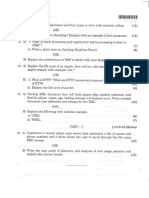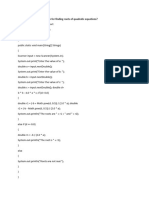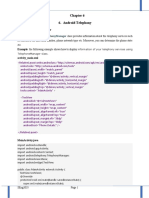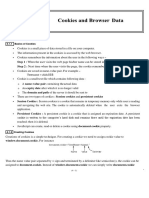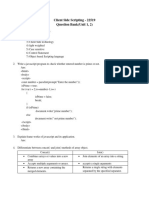0% found this document useful (0 votes)
10K views25 pagesJavaScript Objects Guide
This document discusses JavaScript objects. It defines objects as collections of named values called properties that can contain data of any type, including other objects and functions. It describes different ways to create objects using object literals or the new keyword. It also covers object properties, methods, nesting objects, and the this keyword.
Uploaded by
Elvira MedioCopyright
© © All Rights Reserved
We take content rights seriously. If you suspect this is your content, claim it here.
Available Formats
Download as DOCX, PDF, TXT or read online on Scribd
0% found this document useful (0 votes)
10K views25 pagesJavaScript Objects Guide
This document discusses JavaScript objects. It defines objects as collections of named values called properties that can contain data of any type, including other objects and functions. It describes different ways to create objects using object literals or the new keyword. It also covers object properties, methods, nesting objects, and the this keyword.
Uploaded by
Elvira MedioCopyright
© © All Rights Reserved
We take content rights seriously. If you suspect this is your content, claim it here.
Available Formats
Download as DOCX, PDF, TXT or read online on Scribd
/ 25




